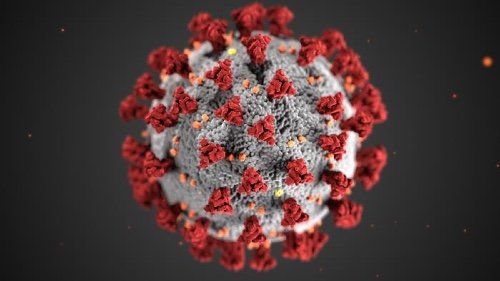ACR Releases CT and Chest X-ray Guidance Amid COVID-19 Pandemic
ACR recommends against using CT as a first-line test; offers advice on imaging use.

The American College of Radiology (ACR) released its first official guidance for radiologists facing the expanding COVID-19 pandemic on Wednesday. Their advice outlines the radiologic evidence surrounding the virus, as well as how radiologists and their facilities can best use imaging with potential cases.
These published guidelines come on the heels of the announced from the World Health Organization (WHO) that the COVID-19 outbreak has now reached pandemic status. As of March 11, at time of publication, there were 118,381 confirmed cases, including 4,292 deaths, in 114 countries, according to WHO data.
With the number of cases continuing to grow in the United States, the ACR, which already deems chest CT “usually not appropriate” for acute respiratory illness, recommended providers and health systems adhere to guidance published by the Centers for Disease Control & Prevention (CDC). The CDC does not currently recommend chest CT or chest X-ray as a diagnostic method for COVID-19 infection.
COVID-19 symptoms aren’t specific and can be easily confused for other infections, such as flu, H1N1, SARS, and MERS, and the concurrent flu season can make accurate identification even more difficult. According to the CDC, even if a chest CT or X-ray suggests COVID-19, viral testing is the only specific method for diagnosis.
Based on their research, the ACR made these four recommendations:
- CT should not be used to screen for or as a first-line test to diagnose COVID-19.
- CT should be used sparingly and reserved for hospitalized, symptomatic patients with specific clinical indications for CT. Appropriate infection control procedures should be followed before scanning subsequent patients.
- Facilities may consider deploying portable radiography units in ambulatory care facilities for use when chest X-rays are considered medically necessary. The surfaces of these machines can be easily cleaned, avoiding the need to bring patients into radiography rooms.
- Radiologists should familiarize themselves with the CT appearance of COVID-19 infection in order to be able to identify findings consistent with infection in patients imaged for other reasons. In this vein, the ACR Data Science Institute published its first AI Use Case that includes pertinent clinical information.
Related Content COVID-19 Imminent in the U.S.: How Radiologists Can Reduce the Spread
Even though chest CTs are not recommended as the first-line diagnostic test, radiology departments will still encounter a growing number of patients suspected of infection in the coming weeks and months. Consequently, the ACR recommended putting good infection-control measures in place to contain viral spread as much as possible.
“These measures to eliminate contamination for subsequent parties may reduce access to imaging suites, leading potentially to substantial problems for patient care,” the ACR statement said.
Any imaging suite – and all surfaces – used for scanning a patient suspected of COVID-19 infection should be environmentally cleaned and decontaminated by someone wearing proper protective equipment. The air-flow in fixed X-ray or CT rooms should also be considered before bringing in the next patient. Consider the air exchange rates, understanding that rooms may need to be completely avoided for roughly an hour after imaging infected patients.
Overall, the ACR emphasized, knowledge about COVID-19 is constantly emerging, and urged providers to remember online sources of information are consistently being updated.
What is the Best Use of AI in CT Lung Cancer Screening?
April 18th 2025In comparison to radiologist assessment, the use of AI to pre-screen patients with low-dose CT lung cancer screening provided a 12 percent reduction in mean interpretation time with a slight increase in specificity and a slight decrease in the recall rate, according to new research.










